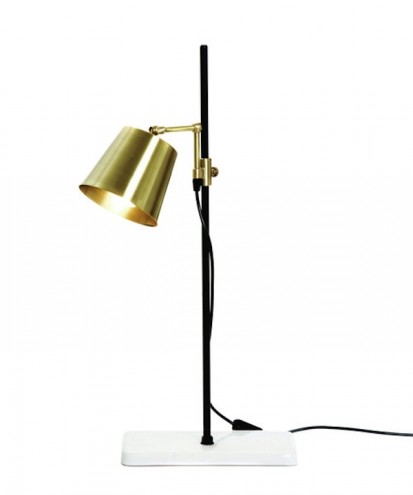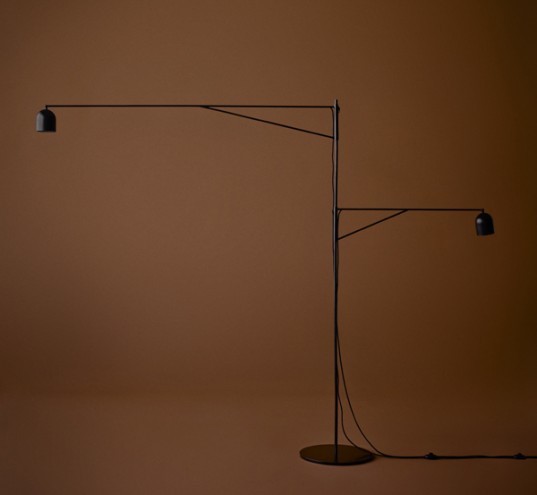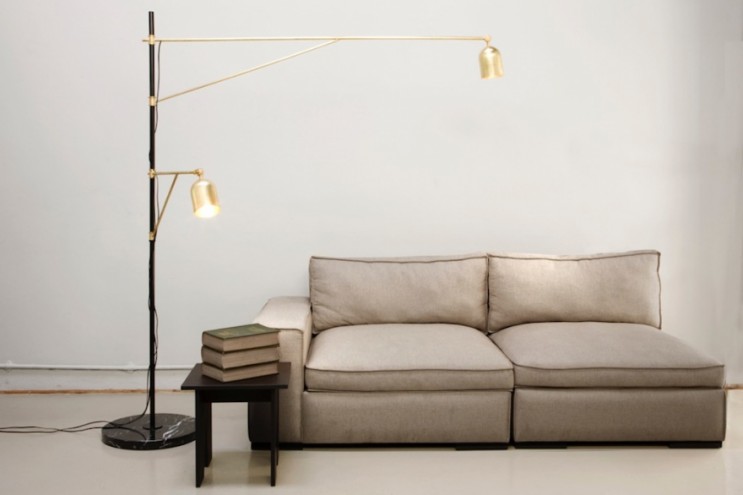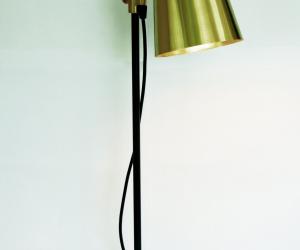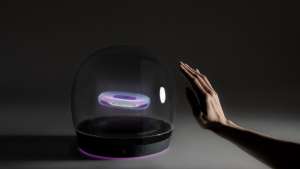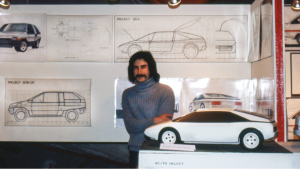When Anatomy Design’s Lab light made its debut in the European market as part of Danish brand Karakter’s first collection at Milan’s Salone del Mobile fair this April, few knew of the laboratory-styled light’s long journey to get to that point.
“It took five years of back and forth, and buckets of patience,” says Johannesburg designer Andrea Kleinloog, who first created the table lamp back out of found materials in 2009, the year she founded Anatomy Design. Kleinloog's business partner, Megan Hesse, joined a year later.
“The Lab light is old news in South Africa, but it’s only breaking into the European market now. It’s not just instant money in the pocket,” she says of locals who think that landing an international distributor equates to a windfall.
In that period, the pair received a real-life education in the possibilities and pitfalls of the South African manufacturing industry. They waded through it with a mixture of hard slog, industriousness, “charm and chocolates”.
Born out of a fascination with utilitarian design, the Lab light was a hit when it launched locally, tapping into contemporary tastes for stark functionality tempered by nostalgia. Its spun brass shade clamped onto a metal stand like a test tube, its height adjustable by turning the metal knobs.
There was nothing about its character that screamed “South African” but such was its widespread appeal that the Lab light was voted the 2010 Most Beautiful Object in South Africa at Design Indaba Expo.That threw it into the limelight.
We received a huge number of enquiries to stock the light. I had only made five!
Then began the tug of war between Anatomy’s desire to sell its designs while protecting the business’s own interests.
“In South Africa, the most frustrating thing is that there is no retail margin,” Kleinloog says. “Manufacturing is so expensive and the scale so small that Anatomy Design couldn’t wholesale the light to other retailers.”
They also refused to downgrade the design to make it cheaper for local manufacture. That led, in part to Anatomy opening its own store in Johannesburg’s buzzy retail enclave 44 Stanley.
There was a lot of general interest in the light; however, one email (“I thought it was spam,” said Kleinloog) came from Christian Elving, now the CEO of Karakter, who was then sourcing products for lighting distributor Mekavi. Elving broke away with Kim Witalis to focus on more design-led products and began investing in brands that had a more time-honed sense of craftsmanship.
Hesse and Kleinloog decided to test out the European market, sending 10 samples of the Lab light to Christian and his partner, Kim, in Denmark. Stringent testing and redevelopment followed to meet European lighting certification standards. The light’s release was delayed until the launch of Karakter at this year's Salone del Mobile, where it was shown alongside designs by the late renowned Joe Colombo, self-taught Dutch designer Aldo Bakker and newcomers Laura Straßer and Milia Seyppel.
A second piece by Anatomy was added, too – the Awkward light, this time designed by Hesse and Kleinloog together, originally for Southern Guild in 2012. They saw a gap in the market for a standing light that could illuminate two areas in close proximity.
We were commiserating about how annoyed we were because we and our husbands each wanted to sit on the side of the couch where the light was.
They only made one Awkward light because it was so incredibly difficult. Together with Karakter they redeveloped it into its current form, again meeting all the necessary European lighting standards.
The functionality of the light led to its immensely awkward proportions. The arms needed to be very long to have a light source on two areas of a sofa, for example. “We then wanted them to almost defy sense visually – to be as skinny and as whimsical as possible,” Kleinloog relates.
But something else influenced the design too: the desire to make it difficult to copy.
The pair had been burned before, when a well-known US store knocked out a suspiciously similar version of their Lab light, mistakes and all.
They took a massive risk in selling the design, they concede, which could have blown up in their face. “There’s an opportunity cost that comes with licensing your work to another brand. We couldn’t sell our lights to anyone else even though we had numerous of enquiries,” Kleinloog notes.
They also admit they felt disloyal to the South African market when they sold their designs to a Danish brand at first.
But it’s not as simple as that.
Our lights are cheaper to manufacture, package, ship from Denmark and land in South Africa than it is for us to get them made here – before even factoring in packaging costs. The standard of Danish workmanship has allowed both lights to go into spaces throughout the world.
The manufacturing limitations in the local market are well known by other designers who've broken into the international sphere. South Africa just can’t compete with the scale of consumption in Europe. “The Salone is the pinnacle of design. The scale is insane. People are ordering thousands of lights,” Kleinloog says.
Having seen how things operate in a more established market where the manufacturing sector is set in its ways, Hesse and Kleinloog do see scope for South Africa to turn its restrictions into growth points.
“We’re still in our infancy – we still have the opportunity to join manufacturers and retailers up,” she says. “It takes time and constant reinvestment in our people. I do have hope that we will contribute more towards our manufacturing sector. And we will continue to develop our other furniture and lighting designs, 90% of which is proudly and beautifully made in South Africa."


